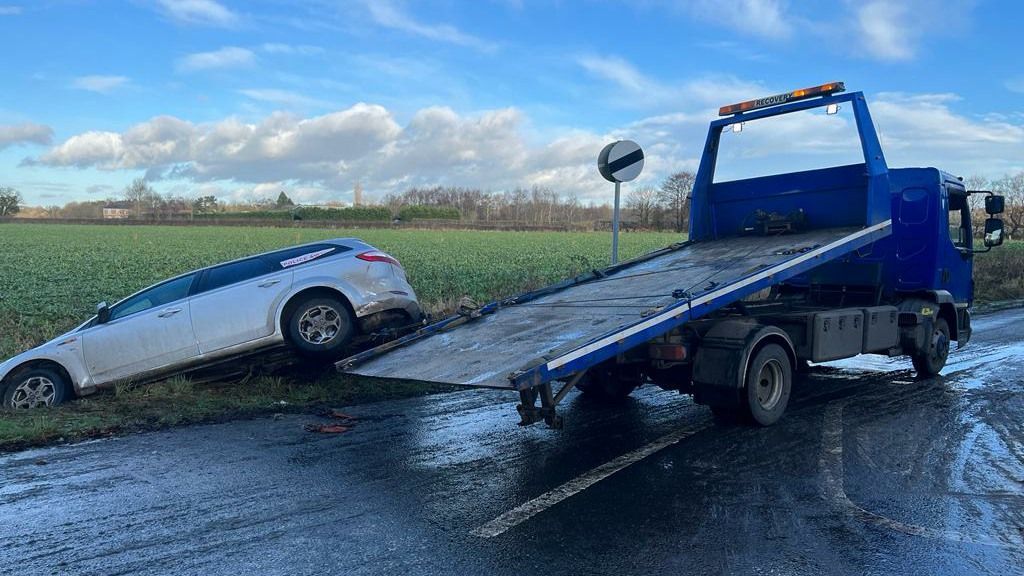Heavy-Duty vs Light-Duty Towing: A Complete Guide
Selecting the right towing service is essential when your vehicle breaks down or is involved in an accident. However, many motorists are unaware of the distinctions between heavy-duty and light-duty towing. These two categories of towing cater to different types of vehicles and scenarios. Understanding the differences will not only save you time but also ensure that your recovery process runs smoothly. This blog’ll explain the key differences between heavy-duty and light-duty towing, outline when each is required, and provide insight into why this knowledge is invaluable for drivers.
What Is Heavy-Duty Towing?
- Heavy-duty towing refers to services designed for large, heavy vehicles and equipment that require specialised tools and techniques to recover.
- Vehicle Types: This includes lorries, buses, motorhomes, HGVs (heavy goods vehicles), and construction machinery.
- Towing Equipment: Heavy-duty towing requires industrial-strength tow trucks, reinforced winches, and sturdy towing cables to handle the weight and size of these vehicles.
When Is Heavy-Duty Towing Required?
- Motorway Breakdowns: Large vehicles stranded on motorways require heavy-duty recovery to clear them safely and efficiently.
- Accidents Involving Large Vehicles: Recovering an overturned lorry or a bus from the scene of an accident.
- Transporting Heavy Equipment: Moving construction vehicles like bulldozers or excavators to specific locations.
Heavy-duty towing demands skilled operators with experience in handling large, complex vehicles to ensure safety and compliance with legal weight limits on UK roads.
What Is Light-Duty Towing?
On the other hand, light-duty towing is the most commonly used service for everyday motorists. It involves recovering smaller vehicles that are easier to transport.
- Vehicle Types: Light-duty towing suits, cars, motorcycles, small vans, and compact SUVs.
- Towing Equipment: Services often involve flatbed tow trucks, hook-and-chain systems, or wheel-lift equipment for quick and efficient recovery.
- When Is Light-Duty Towing Required?
- Local Car Recovery: For vehicles that break down in urban areas or on smaller roads.
- Minor Accidents: Recovering damaged cars after a collision.
- Routine Vehicle Transport: Towing cars to garages for repair or maintenance.
Light-duty towing is fast, cost-effective, and readily available, making it an ideal solution for most everyday recovery needs.
Key Differences Between Heavy-Duty and Light-Duty Towing
While both towing services aim to recover and transport vehicles safely, their methods, equipment, and scope of work differ significantly.
Vehicle Weight and Size
Heavy-duty towing handles vehicles weighing several tonnes, such as buses or HGVs.
Light-duty car recovery is designed for smaller vehicles like personal cars and motorcycles.
Towing Equipment
Heavy-duty services require reinforced tow trucks and advanced winching systems.
Light-duty towing uses simpler setups, such as flatbeds or wheel-lifts.
Cost
Heavy-duty vehicle recovery is generally more expensive due to the complexity of the equipment and expertise required.
Response Time
Light-duty towing is faster, as smaller vehicles are easier to handle and recover.
What to Expect from a Professional Towing Service
Whether you need heavy-duty or light-duty recovery, a reputable company should offer the following:
- 24-Hour Recovery: Breakdowns and accidents can happen at any time, so it’s crucial to have access to recovery services around the clock.
- Fast Response Times: A quick response ensures your vehicle is recovered promptly, minimising stress and inconvenience.
- Skilled Operators: Trained professionals who can safely and efficiently handle your vehicle without causing further damage.
- Local Car Recovery: Services tailored to your area, often marketed as “vehicle recovery near me,” ensure help is just a call away.
Choosing a professional towing service means your vehicle will be recovered safely, efficiently, and with the utmost care.
Why Understanding Towing Types Matters for Motorists
For drivers, knowing the difference between heavy-duty and light-duty towing can save valuable time and money. For example:
- Calling a heavy-duty towing service for a small car breakdown would result in unnecessary costs.
- Alternatively, relying on light-duty towing for a large lorry could lead to delays and risks of improper recovery.
- Being informed about the towing your vehicle requires helps streamline the recovery process, ensuring that you receive the appropriate assistance for your situation.
Both heavy-duty and light-duty towing serve specific purposes in vehicle recovery. Heavy-duty breakdown and recovery service is designed for large, industrial vehicles, while light-duty towing caters to smaller, personal vehicles. Knowing the difference can significantly impact the speed, cost, and success of your recovery experience. When you’re in need of breakdown recovery, choosing a professional and reliable service ensures your vehicle is handled with care and expertise. Whether it’s a minor roadside issue or a major accident, the right towing solution is essential for peace of mind.
At Recovery Southampton, we’re proud to be the go-to choice for breakdown recovery and the surrounding areas. Whether you need 24-hour recovery, local car recovery, or assistance with a car accident recovery, our team is here to help. We’re equipped to handle both light-duty and heavy-duty towing, ensuring your vehicle is safely transported no matter its size or condition. With a focus on professionalism, quick response times, and customer satisfaction, we’re committed to providing a hassle-free recovery experience. From car towing services to accident recovery, you can rely on us to get the job done efficiently and safely.
Check our new X update about the key differences between heavy-duty and light-duty breakdown recovery!
You might also like
Service Areas
Give us a CALL today!



